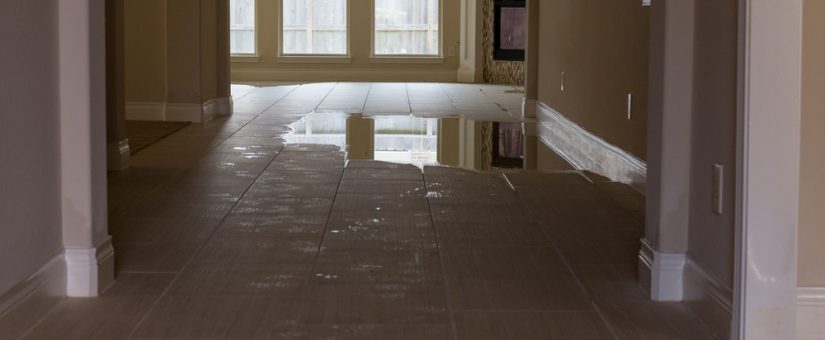The House's Principal Frequent Causes of Leak Problems: Thorough Investigation
The House's Principal Frequent Causes of Leak Problems: Thorough Investigation
Blog Article
What're your insights and beliefs about Common Water Leaks In House?

Leakages not only trigger waste of water yet can likewise cause unnecessary damages to your house as well as advertise undesirable organic growth. Sadly, water leakages could go undetected considering that most of the pipework in our house is concealed. By recognizing as well as looking for day-to-day scenarios that create leakages, you can shield your home from future leaks and unnecessary damage. Today, we will certainly take a look at six leak causes that might be causing your pipelines to drip.
Intruding origins
A lot of water leaks begin outside your house rather than inside it. If you notice an unexpected decline in water stress, say in your faucet, take some time to head out and also examine your yard. You might discover damp spots or sinkholes in your backyard, and that could mean that tree origins are getting into water lines triggering water to leak out. You can have your plumber look for invasion, especially if you have trees or shrubs near your property.
Corroded water supply
As time passes by, your plumbing system ages and deterioration such as rust might begin eating away the pipes. This might be the source of discoloration or warping on your pipes. This requires an examination with your plumber promptly. If our plumbing system is old, think about replacing the pipelines because they go to a higher threat of rust than the more recent designs.
Faulty Pipe Joints
Pipe joints can deteriorate over time, resulting in water leaks. If you have loud pipelines that make ticking or banging noises, specifically when the hot water is turned on, your pipeline joints are most likely under a lot of pressure.
Immediate temperature level modifications.
Extreme temperature level changes in our pipelines can cause them to broaden and also contract all of a sudden. This development and contraction might trigger splits in the pipelines, specifically if the temperature are below freezing. If you maintained an eye on how your plumbing works, it would be best. The visibility of the previously pointed out scenarios often indicates a high risk.
Poor Water Connectors
Sometimes, a leakage can be caused by loose pipes as well as pipes that supply your home appliances. More often than not, shifting is what creates the loosened water Links. You may find when it comes to a washing maker, a pipe might spring a leak because of drinking throughout the spin cycle. In case of a water links leakage, you may discover water running straight from the supply line or pools around your home appliances.
Clogged Drains
Clogged drains pipes may be bothersome as well as inconveniencing, however they can sometimes wind up triggering an overflow bring about burst pipes. Keep removing any products that might decrease your drains pipes that might obstruct them to stay clear of such hassles.
All the above are root causes of leaks but not all water leaks result from plumbing leakages; some leaks might originate from roofing leaks. All leaks need to be repaired right away to avoid water damages.
Leaks not just cause waste of water yet can likewise cause unnecessary damages to your residence and advertise unwanted natural growth. By comprehending and looking for daily circumstances that trigger leaks, you can safeguard your residence from future leaks and also unneeded damage. Today, we will certainly look at six leakage creates that might be causing your pipelines to leak.
At times, a leak can be triggered by loosened tubes and also pipelines that supply your home appliances. In instance of a water links leak, you might see water running straight from the supply line or pools around your devices.
How To Check For Water Leak In Your Home
How To Check for Leaks
The average household's leaks can account for nearly 10,000 gallons of water wasted every year and ten percent of homes have leaks that waste 90 gallons or more per day. Common types of leaks found in the home are worn toilet flappers, dripping faucets, and other leaking valves. These types of leaks are often easy to fix, requiring only a few tools and hardware that can pay for themselves in water savings. Fixing easily corrected household water leaks can save homeowners about 10 percent on their water bills.
To check for leaks in your home, you first need to determine whether you're wasting water and then identify the source of the leak. Here are some tips for finding leaks:
Take a look at your water usage during a colder month, such as January or February. If a family of four exceeds 12,000 gallons per month, there are serious leaks.
Check your water meter before and after a two-hour period when no water is being used. If the meter changes at all, you probably have a leak.
Identify toilet leaks by placing a drop of food coloring in the toilet tank. If any color shows up in the bowl after 10 minutes, you have a leak. (Be sure to flush immediately after the experiment to avoid staining the tank.)
Examine faucet gaskets and pipe fittings for any water on the outside of the pipe to check for surface leaks.
Undetected water leaks can happen without the home or business owner even realizing. If you suspect a water leak, but not able to find the source. It is time to contact a professional water leak detection service, The Leak Doctor.
How To Find a Water Leak In Your Home
https://www.leakdoctor.com/blog/How-To-Check-For-Water-Leak-In-Your-Home_AE197.html

Hopefully you enjoyed our piece on How Fast Water Damage Can Ruin Your Home. Thanks so much for finding the time to read our posting. Sharing is good. Helping others is fun. Thank-you for going through it.
Top-rated emergency plumbing? Connect today. Report this page